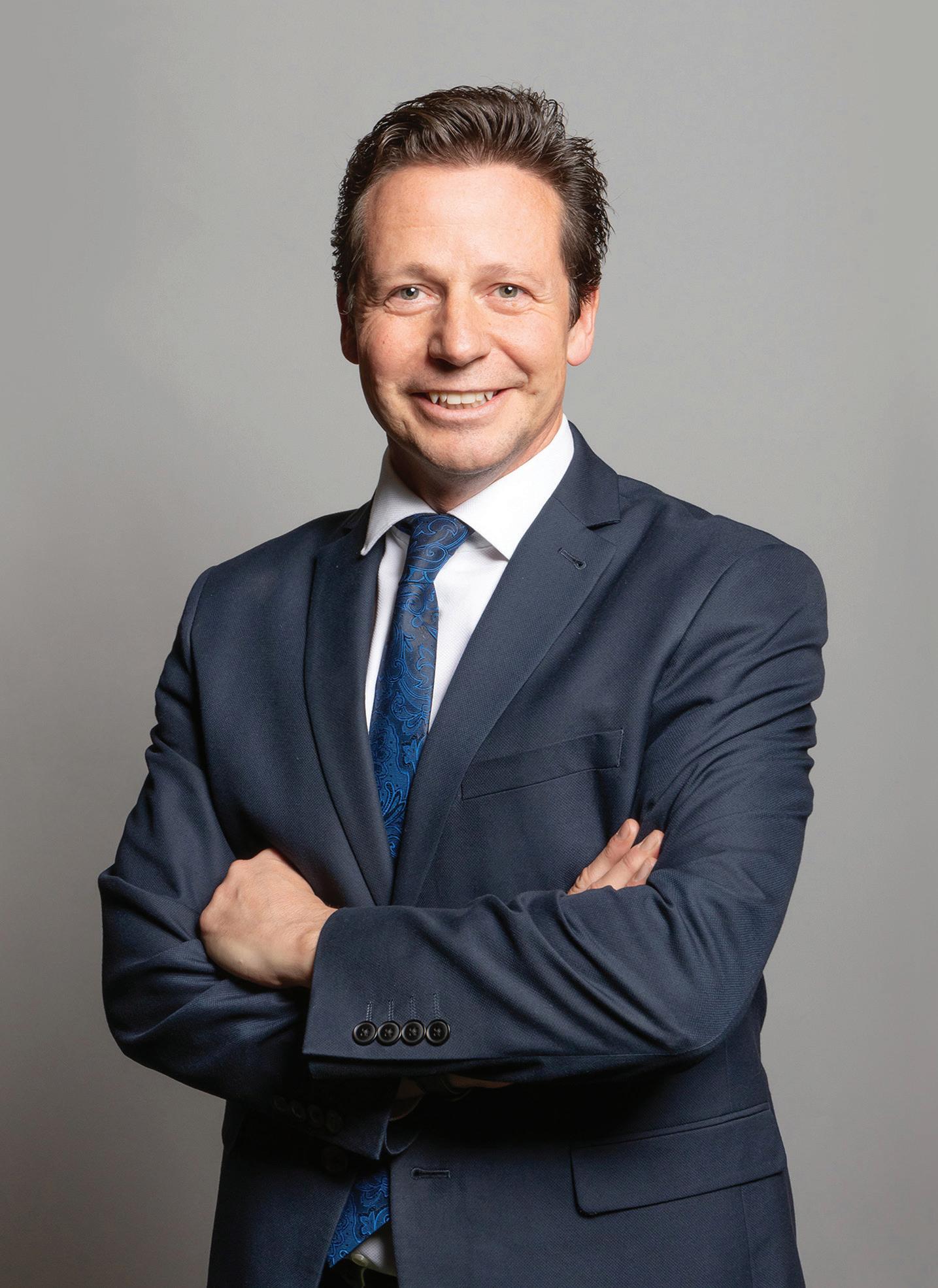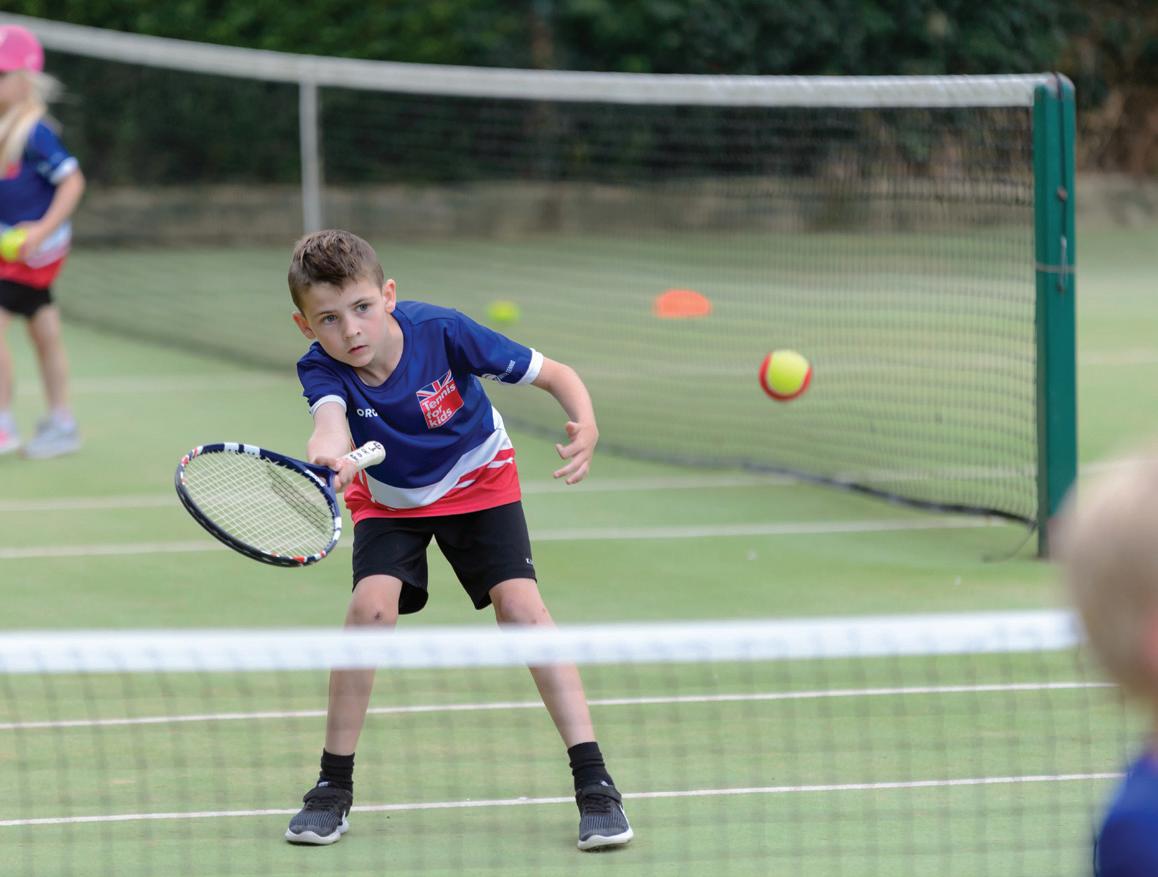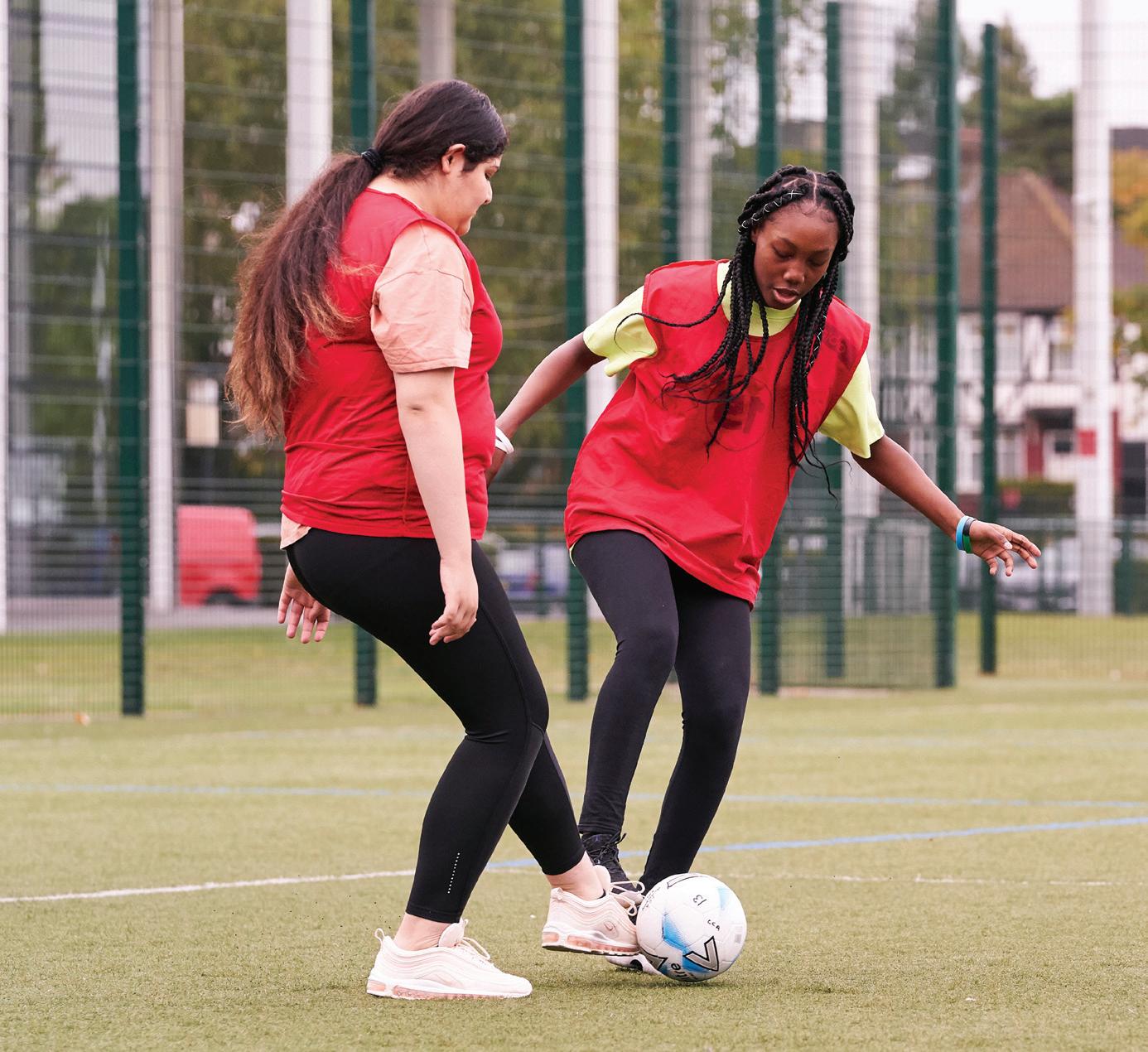
9 minute read
Interview: Nigel Huddleston
© RICHARD TOWNSHEND PHOTOGRAPHY
Huddleston was appointed sports minister in February 2020
Advertisement
22 SPORTSNATION.ORG.UK JAN/FEB 2022
NIGEL HUDDLESTON

In an exclusive interview with SportsNation, sports minister Nigel Huddleston speaks to Tom Walker about the government’s pandemic response and the new sports strategy, set to be published early this year
Nigel Huddleston was appointed sports minister as part of Prime Minister Boris Johnson’s first significant reshuffle of his government, back in February 2020. The MP for Mid Worcestershire replaced Nigel Adams and, at the time, became the fourth sports minister to take up office in just 16 months.
The timing of his appointment, just weeks before the first COVID-19 lockdowns, resulted in his tenure getting off to a slightly more hectic start than he might have first expected.
“There were a lot of new ministers appointed on that same day and within a month we were all reacting and responding to the COVID-19 pandemic,” Huddleston tells SportsNation.
“Dealing with COVID-19 has dominated a huge chunk of my time and activities ever since, but I, alongside colleagues, have tried to balance the demands of responding to the pandemic with other work. We’ve been keen to keep pushing things forward, especially when it comes to items where the clock is ticking – such as preparing for the Commonwealth Games in Birmingham, the Review of Football Governance and the bid for the 2030 FIFA World Cup.
“We’ve also managed to drive a lot of progress on work which will directly impact the sport construction sector – such as our manifesto commitment to build more


The government recently invested £22m in tennis
© SPORT ENGLAND
football pitches, multi-use games areas and other sports facilities around the country.”
BUILDING BACK BETTER
Huddleston says he’s proud of the way the government has continued to invest in the UK’s sports infrastructure, despite the budgetary pressures and constraints caused by the pandemic. In the summer of 2021, the government earmarked £50m towards grassroots football pitches across the UK. This was followed by £235m being pledged for new and refurbished community sports facilities in the 2021 October Spending Review.
“We’re now working on the details of those funding announcements – where the money will go and how it will be rolled out,” Huddleston says. “We all know that


facilities play a crucial role in getting people physically active. And it’s important to do so, as encouraging people to lead active, healthy lives eases the pressures on the NHS. We saw that during the pandemic too, with all the data suggesting that being more active and healthy could help you fight off the worst elements of COVID-19.
“We also know, however, that physical activity levels have fallen during the pandemic. So it’s absolutely key that we try and get fitness and exercise levels back up. Therefore, our investments in sport and physical activity facilities are part and parcel of the overall recovery plan and our approach to ‘build back better’ following COVID-19.”
RAPID RESPONSE
Huddleston is hugely positive about the future of the sports and physical activity sector and is confident it will recover from the effects of the pandemic. Much of this he puts down to the relationships his department, the DCMS, now has with governing bodies of sport and other sector stakeholders. He sees this, a strengthened sense of collaboration between sports bodies and the government, as one of the few direct benefits of the pandemic.
“As soon as we went into the first lockdown, we launched a sports working group which includes representatives from across the sector – the private sector, the public sector, governing bodies of sport and other institutions,” he says.
“We wanted to make sure we were working together to understand what the immediate problems were and also to be ready to begin work on the recovery as soon as we could.
“As a result, the relationship between government and sports – and the physical
Huddleston says sport is part and parcel of the government’s plans to “build back better”
© SPORT ENGLAND
The government looks to make sport more inclusive for all
activity sector as a whole – has probably never been stronger. We’ve been working together, day in, day out and been having regular meetings in order to ensure that sport is prioritised in our COVID-19 response.
“So if there’s a silver lining to the pandemic and its impact, it’s probably the relationships the government has formed with the sports industry. I’m not saying we’ve been able to deliver everything that the sector wanted – in terms of the pandemic response – but we have done a lot in terms of sector-specific support.
“You only have to look at the £300m sports winter survival package we announced in late 2020 and the way it evolved into a broader, overall package. Or the £100m National Leisure Recovery Fund, which supported local authority leisure centres. There’s also a number of other, wider funding initiatives which are still ongoing and which I know have helped sports and sports facilities. In total, we’ve seen more than £1bn going into supporting the sector through COVID-19.
“So there’s been a fair bit of money flowing in – and it was made possible because we had that strong relationship with the sector. We understood the circumstances and difficulties
SAPCA and its members play a really important part in the sports ecosystem and without them, we in government wouldn’t be able to get on with our job of getting the nation more physically active

The government is looking to secure a number of major sports events for the UK

the sector faced, because the representatives were open and honest about the issues they faced. That enabled me and my colleagues to go to the Treasury and say ‘look, this sector needs some help and support’. And the momentum of that relationship is something I want to keep going, as we move forward.”
STRATEGIC MOVES
When it comes to improving the UK’s sports infrastructure, Huddleston reveals that the government is currently working towards identifying the types of facilities which are in particular need of investment.
“We’re looking to find out exactly where the gaps are,” he says. “And we’re working with the individual governing bodies of sport on that. The FA, for example, has been fantastic in helping us identify where there’s most need for football pitches. Also, our recent investment of £22m into tennis – which will see thousands of public park tennis courts that are in poor or unplayable condition being brought back to life – was helped hugely by the work the LTA did in terms of identifying the state and condition of courts around the country. We’re also doing similar work with the swimming bodies in relation to swimming pools.”
Linked to this process is the government’s new sports strategy, due to be launched in early 2022. The current strategy – called Sporting Future – was published in 2015 under then sports minister Tracey Crouch. Huddleston says it is now time to “refresh” the document, which will outline the government’s direction of travel regarding sport – from grassroots to high performance.
Huddleston has had a love of crosscountry running since his childhood

“As we come out of this pandemic, we have a prime opportunity to build on the foundations laid,” he says. “Our primary focus remains helping the sector recover from the pandemic. But as we look to the future and our refreshed sporting strategy, we will be working closely with the sector for its input in terms of levelling up facilities and improving the sport infrastructure, as we seek to build the active and healthy nation we want to see.”
While he can’t reveal too much of what the strategy will include – and which areas will be deemed priorities – he does hint that inclusivity, equality and increasing opportunities for all to take part in activities will be at the very heart of it.
“When I started in this role back in February 2020, I wanted to focus on improving activity levels and inclusivity within sport – especially when it comes to getting more women and people from BAME communities involved and engaged in sport and physical activity,” he says. “That goal is very much still there.
“When the new secretary of state, Nadine Dorries, came in, one of her instructions to ministers within the department was that everything we do should be based on the theme of inclusivity and accessibility. That was music to my ears.
“Our new strategy will look to further strengthen the role of physical activity and sport and use it as a driving force to improve the wellbeing of people. This will be combined with efforts to target the under-represented. We will also look to refresh the School Sport and Activity Action Plan – because let’s not forget that more than a third of all sports and leisure facilities are behind school gates.”

A MINISTER FOR ALL SPORTS
Huddleston says he has thoroughly enjoyed his tenure as sports minister. He has certainly brought stability back to the role, after the somewhat short stints of his two predecessors, Mims Davies and Nigel Adams. His success could be something to do with the fact that he is a genuine sports fan and passionate about the sector.
“I love sport and was a keen athlete at school,” he reveals. “I played football, rugby and cricket, but I also loved athletics and cross-country running. When I lived and worked in the US, I also became an avid follower of baseball and American football.
“At times, the role of sports minister has been criticised as being one of “minister for football”. I think it’s important to stress that’s not the case. I’m very conscious that football shouldn’t consume all of the time and attention.”
He also has a warm message for those delivering the UK’s sports facilities, with a special nod to the Sports and Play Construction Association (SAPCA). “Those responsible for building the country’s physical activity facilities – the members of SAPCA, for example – play a really important part in the sports ecosystem. Without them we simply wouldn’t be able to get on with our job of getting the nation more active.” ●










